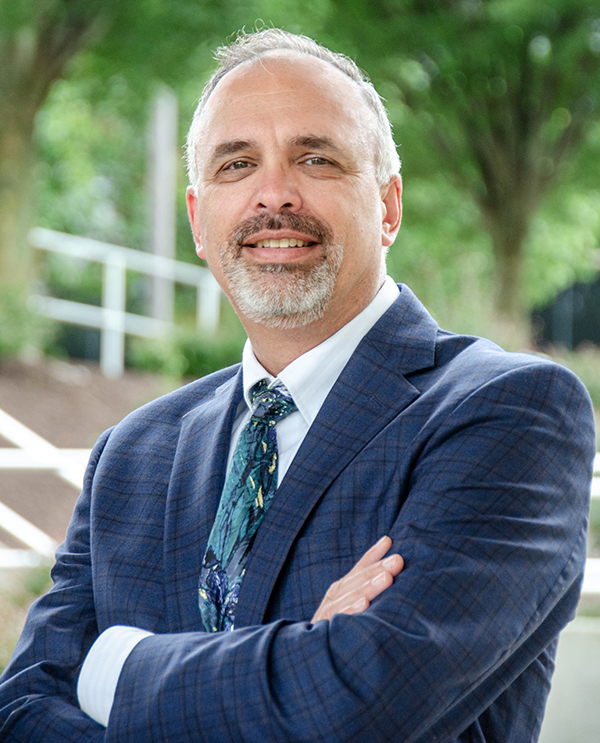
NPRE 596 Graduate Seminar Series - Earl Scime
- Event Type
- Seminar/Symposium
- Sponsor
- NPRE 596 Graduate Seminar Series
- Location
- 2100 Sidney Lu Mechanical Engineering Building, 1206 W. Green Street, Urbana, IL
- Date
- Sep 19, 2023 4:00 - 4:50 pm
- Speaker
- Prof. Earl Scime, Oleg D. Jefimenko Professor of Physics and Astronomy, Director, Center for KINETIC Plasma Physics, Department of Physics and Astronomy, West Virginia University
- Cost
- Free and Open to the Public
- nuclear@illinois.edu
- Phone
- 217-333-2295
- Views
- 68
- Originating Calendar
- NPRE seminars
Fundamental Laboratory Plasma Physics Experiments – What can They Tell us About “Naturally” Occurring Phenomena in Space and Fusion?"
Abstract: One of the “Grand Challenges” of plasma physics is to understand the processes whereby energy stored in the magnetic fields of a plasma is converted into kinetic energy of the ions and electrons in the plasma. We see that this energy conversion happens in stars, in planetary magnetospheres, and in fusion plasmas. I will review the experimental evidence for the energy conversion process and highlight one particular possible mechanism – magnetic reconnection. I will then describe a new experiment at West Virginia University, the PHAse Space MApping (PHASMA) experiment that is designed to investigate the energy conversion process during magnetic reconnection at the kinetic, i.e., smaller than the electron gyroradius, scale in laboratory plasmas. PHASMA has a unique diagnostic complement that includes laser induced fluorescence diagnostics for ion velocity distribution function measurements, Thomson scattering diagnostics for electron velocity distribution function measurements, and a microwave scattering system for turbulence measurements. To create the conditions necessary for reconnection, PHASMA employs two plasma sources. First, PHASMA includes a 1 kW, steady-state helicon source capable of generating variable-density background hydrogen, helium, argon, krypton, and xenon plasmas with controllable plasma pressure (relative to the magnetic pressure), collisionality, and azimuthal flow shear. Second, PHASMA includes two pulsed plasma guns that create magnetized tubes of plasma, “flux ropes.” The flux ropes attract each other and merge through the process of magnetic reconnection. I will present experimental studies of the merger of two flux ropes through electron-only reconnection. We find that, consistent with theoretical predictions, the majority of incoming magnetic energy appears as electron thermal energy and that Ohmic processes are unlikely to be responsible for the measured increase in electron enthalpy. The electron velocity distribution function measurements include non-Maxwellian features, including beams that jet out from the X-point in both outflow directions. We observe that the electron beam speed scales with the local electron Alfvén speed. I will also describe the first three-dimensional measurements of electron velocity distribution functions in the laboratory and discuss them in terms of possible electron heating mechanisms during reconnection.
Bio: Earl Scime is the Oleg D. Jefimenko Professor of Physics and Astronomy at West Virginia University (WVU). He is a past Chair of the American Physical Society’s Division of Plasma Physics. He moved to WVU in 1994 from Los Alamos National Laboratory, where he was a DoE Distinguished Postdoctoral Fellow. His research interests span fusion plasmas, space plasmas and industrial plasmas – with a cross-cutting focus on particle heating and velocity distribution function measurements. In 1992, he reported the first measurements of dynamo driven ion heating in the Madison Symmetric Torus. He has continued to measure particle velocity distributions in laboratory and space plasmas through a variety of diagnostic techniques including energetic neutral atom imaging, Thomson scattering, single photon laser induced fluorescence, cavity ring-down spectroscopy, and multi-photon laser induced fluorescence. He has contributed to over 190 peer-reviewed publications and was named a Fellow of the American Physical Society in 2011. He is also founder and head coach of the award-winning robotics team, Mountaineer Area Robotics, an internationally recognized high school robotics program.